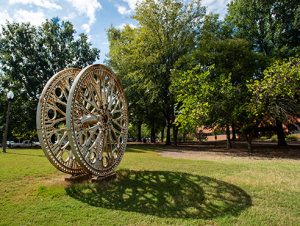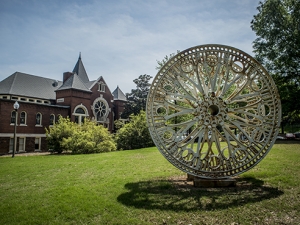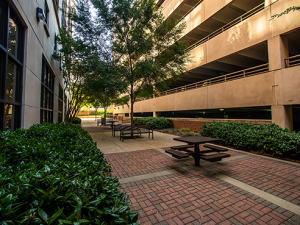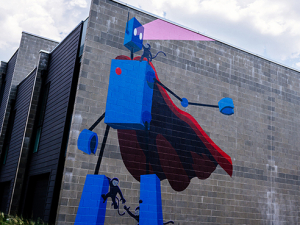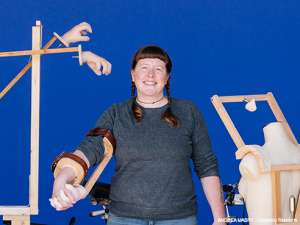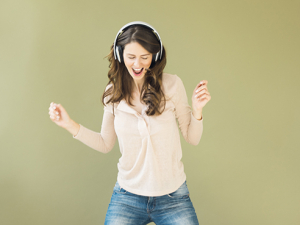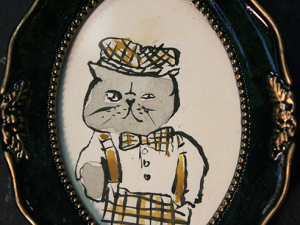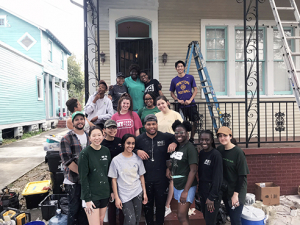On an urban campus, it’s easy to think the only jungle around is one of the concrete variety — even with access to large, popular green spaces such as the Campus Green or the Mini Park.
Having access to green spaces in an urban environment means more than easily finding a pleasant place to enjoy a lunch break. Earlier this year, a team of researchers from the Department of Occupational Therapy reported that spending 20 minutes in an urban park can make someone happier, regardless of whether they’re engaging in exercise during the visit.
Many of UAB’s smaller, more sequestered green spaces are home to some of the more than 4,400 healthy trees, for which UAB has been recognized as a Tree Campus USA by the National Arbor Day Foundation five times. As UAB celebrates its 50th anniversary in 2019, its trees have provided $125 million worth of air-pollution control, $126 million in soil-erosion control and recycled at least $152 million worth of water. UAB’s commitment to treasuring its trees is reflected in both the institutional strategic plan, Forging the Future, and in UAB Sustainability’s strategic plan, which includes a promise to reduce its greenhouse gas emissions by 20 percent by 2025.
Scroll down to see which space is closest to where you work, live and play, and explore new ones using the specialized Google Map created by the UAB Reporter.
Volker Hall mezzanine
This shaded, tree-lined space has rows of concrete benches and is accessible from ground level at the northeast corner of University Boulevard and 16th Street South and from Volker Hall's first-floor lobby.
Named for UAB’s first president, Joseph Volker, Volker Hall is home to the School of Medicine and is the primary teaching facility for students during the first few years of medical school; it houses the majority of medical education classrooms and labs.
Lister Hill and Volker Hall courtyard
Accessible from the first floors of Volker Hall and the Lister Hill Library of the Health Sciences, this outdoor courtyard is partially shaded by potted foliage and building shadows with many wooden benches for eating lunch or spreading out to study.
UAB Gardens
Opened in summer 2017 along 12th Avenue South and 17th Street at the southeast corner of campus, the UAB Gardens is home to more than 40 raised beds for the urban farmers on UAB’s workforce and murals painted by Assistant Professor Doug Baulos, Associate Professor Doug Barrett and their art students and alumni.
The yards at Blount and Rast halls
Located just a few blocks west of the UAB Gardens sit Blount and Rast residence halls, home to second-year or higher students. Between the two halls is a sprawling green space with benches, picnic tables, shaded sidewalks, bike racks, flowerbeds, a hammock park and two sculptures, Casey Downing Jr.’s Circular XXI and John W. Parker’s Leopitsaura.
UAB’s campus is home to more than 35 statues or sculptures. Explore three walking trails showcasing the public art — each is about two miles long and takes around 30 minutes to walk. The trails can be viewed on a special Google Map.
The Arts District quad
Sequestered behind the Spencer Honors House, the Alys Stephens Center, the Hulsey Center for the Arts and the Humanities Building, this large outdoor space is home to picnic tables, benches and many of UAB’s most treasured sculptures, including Vaughn Randall’s Rosette Bobbin and Brad Morton’s The Crossing.
UAB’s campus is home to more than 35 statues or sculptures. Explore three walking trails showcasing the public art — each is about two miles long and takes around 30 minutes to walk. The trails can be viewed on a special Google Map.
School of Nursing plaza and courtyard
Find a spot to study or grab lunch from Einstein Bros. Bagels on the School of Nursing’s second-level plaza, which connects the School of Nursing with the Susan Mott Webb Nutrition Sciences Building and the Learning Resource Center.
Looking for somewhere a bit more secluded? Try the ground-level courtyard at the nursing building’s northeast corner to prop up your feet on a UAB-monogram coffee table.
Corridor between Ryals and the Ninth Avenue Parking Deck
The narrow space sandwiched between the Ryals Public Health Building and the Ninth Avenue Parking Deck, completely shaded thanks to neighboring structures, offers foliage, tables and bike racks.
The ArtPlay backyard
Located on 19th Street South near Five Points South, the backyard of the Alys Stephens Center’s ArtPlay is home to UAB’s largest and oldest tree — Quercus rubra, also known as the Northern red oak or champion oak. The tree is around 44 inches in diameter at breast height.
The yard also features two sculptures, Strummin’ Sister Steel, gifted by J. Richard Zeski, and a brightly colored kinetic sculpture created in 2011 by artist Kevin Reese and Birmingham schoolchildren.
UAB’s campus is home to more than 35 statues or sculptures. Explore three walking trails showcasing the public art — each is about two miles long and takes around 30 minutes to walk. The trails can be viewed on a special Google Map.
The Park of Hope
Located in the Medical District adjacent to the Women and Infants Center is the Jim Limbaugh Family Park of Hope. Built to honor Phyllis Limbaugh, the oval-shaped park offers benches to sit in a relaxing green space in the heart of UAB’s clinical campus.
Facilities Administration Building courtyard
Sequestered at UAB’s northwestern corner of campus, the historic Facilities Administration Building, once home to the Jefferson County Board of Education, features a shaded courtyard. In the courtyard sits an unidentified sculpture depicting figures holding books, a throwback to the building’s educational era.
UAB’s campus is home to more than 35 statues or sculptures. Explore three walking trails showcasing the public art — each is about two miles long and takes around 30 minutes to walk. The trails can be viewed on a special Google Map. If you know the name or artist behind any of the pieces marked in gray on the map, email reporter@uab.edu.
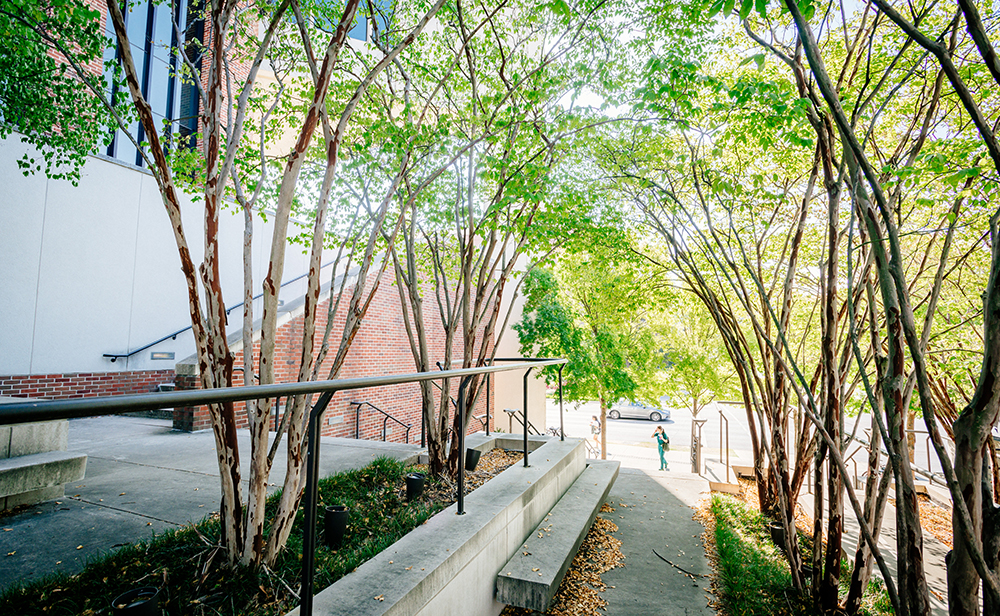

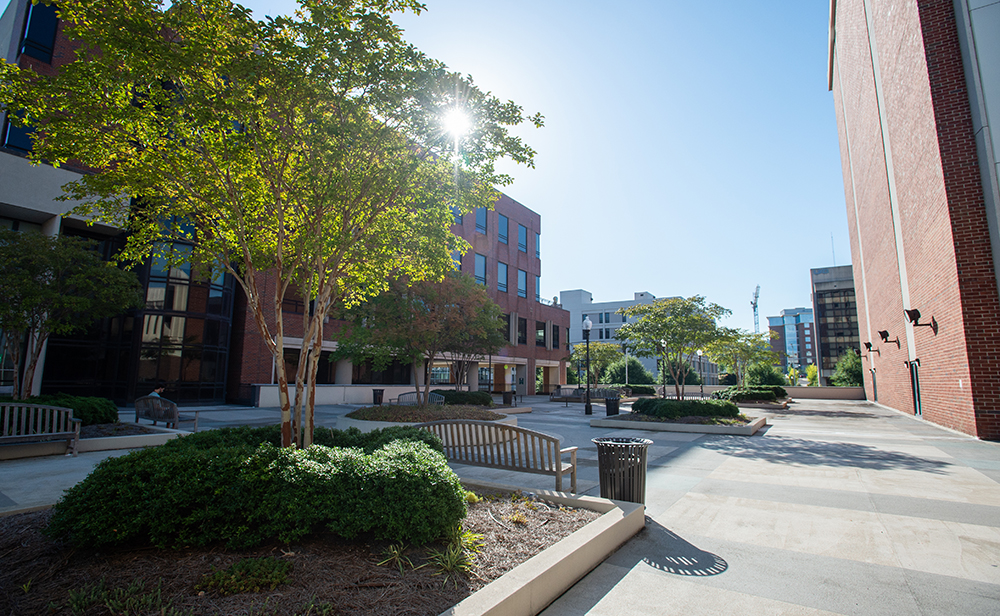
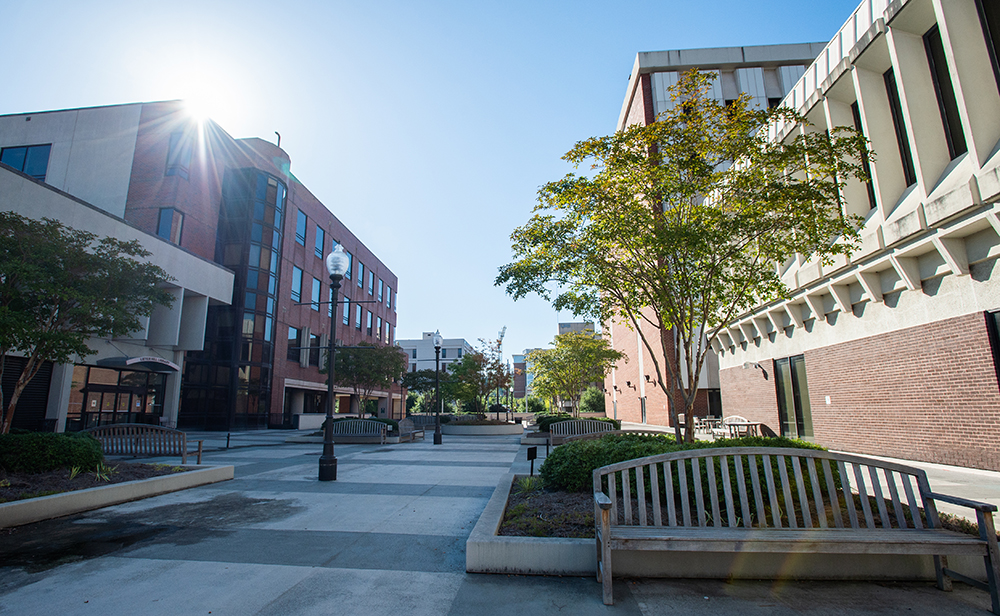

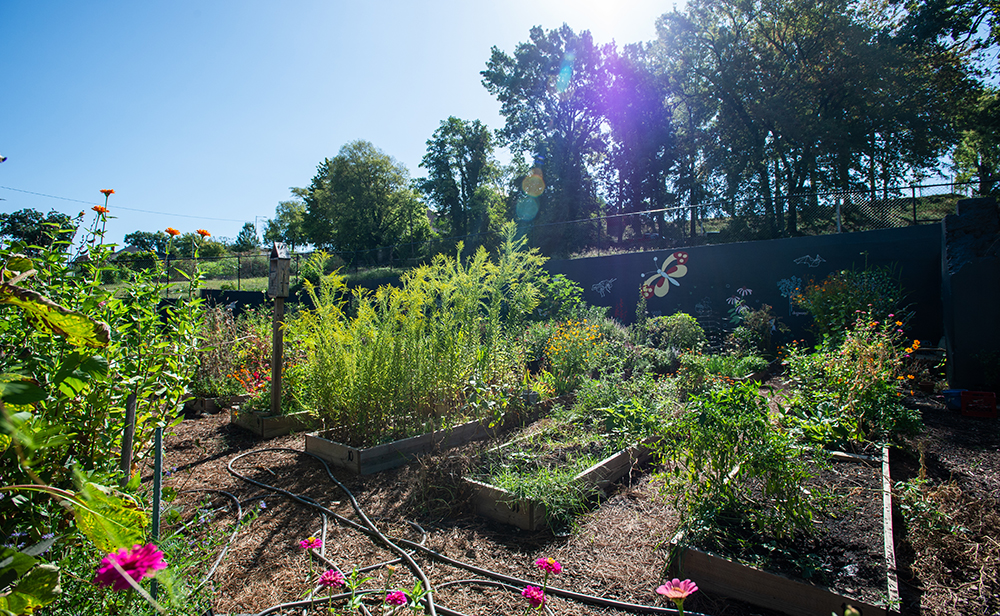

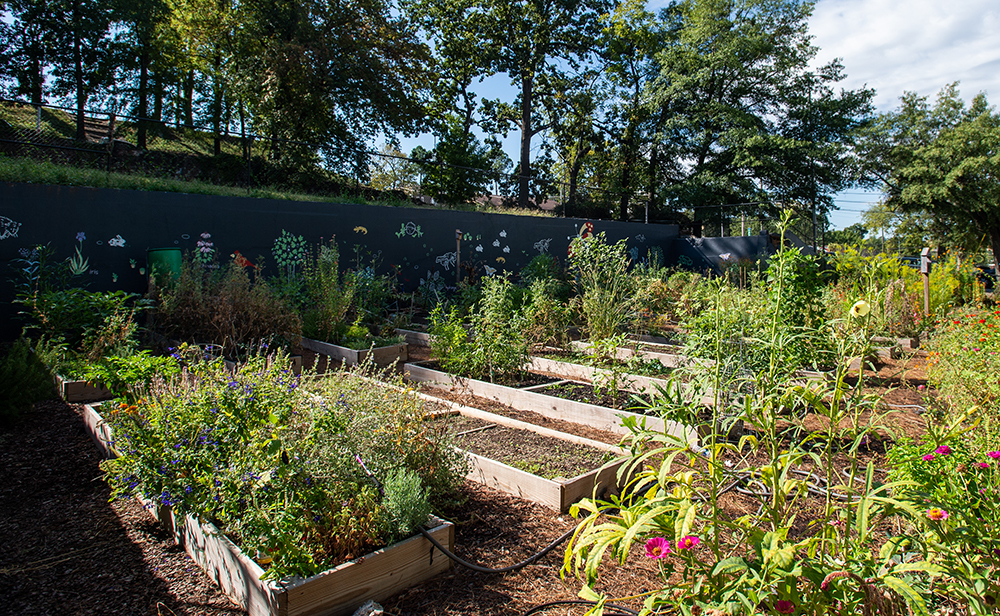
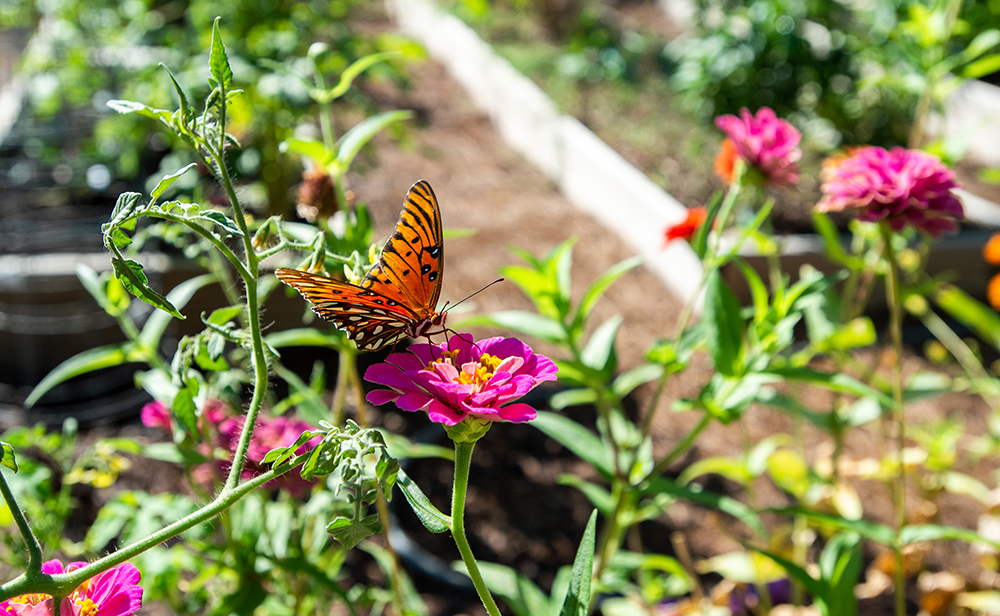


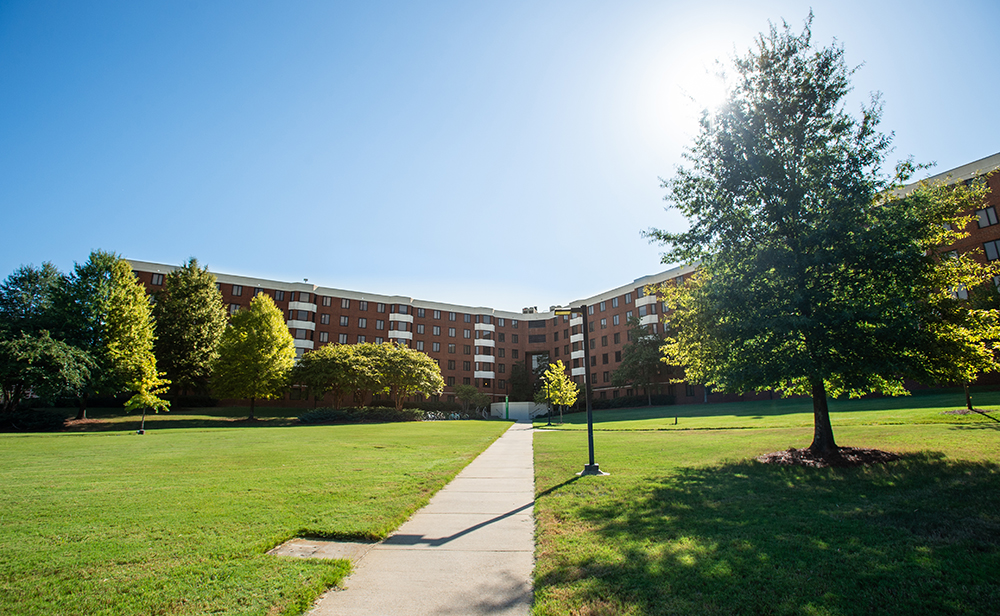
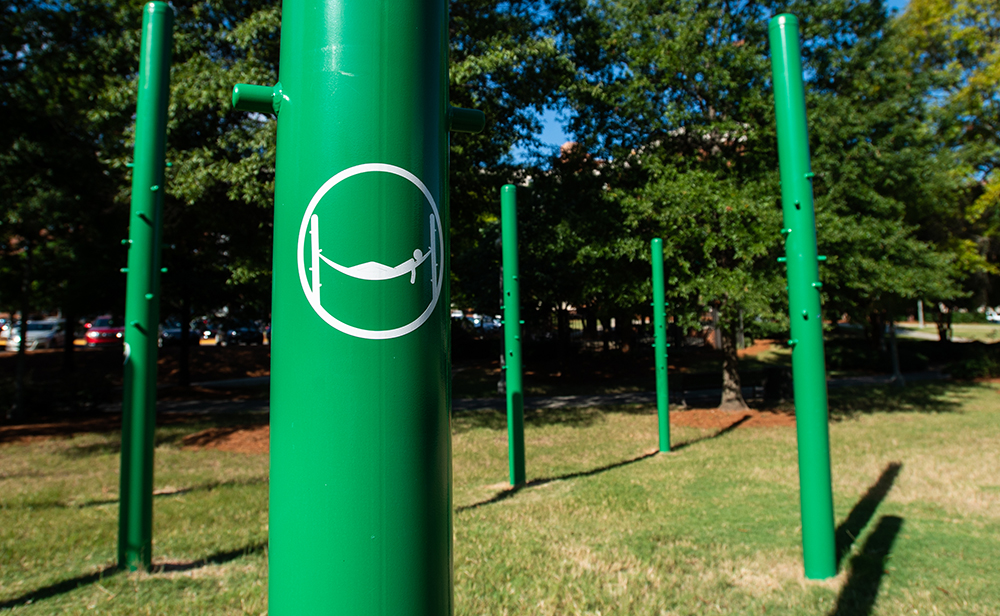
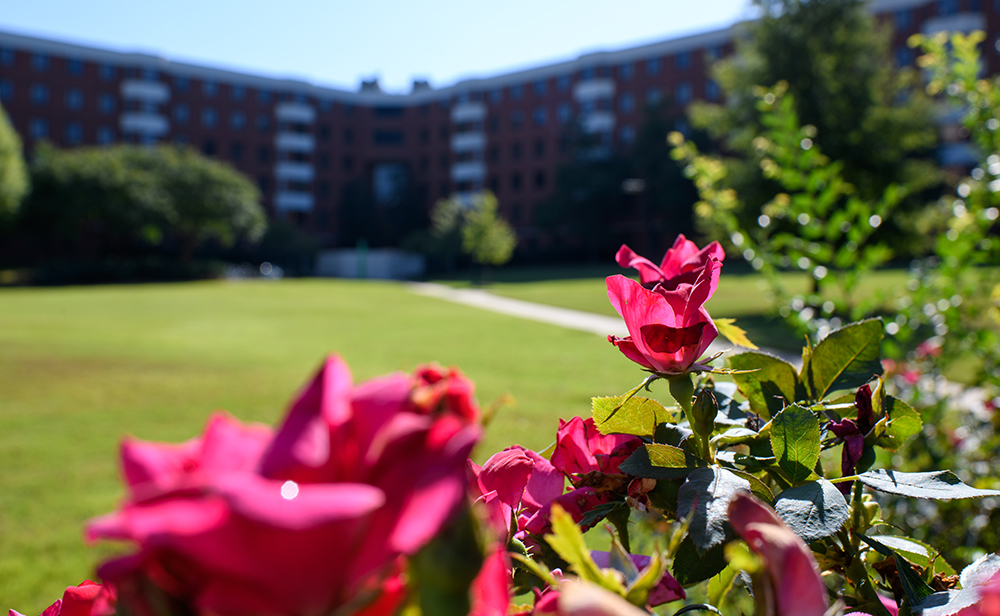

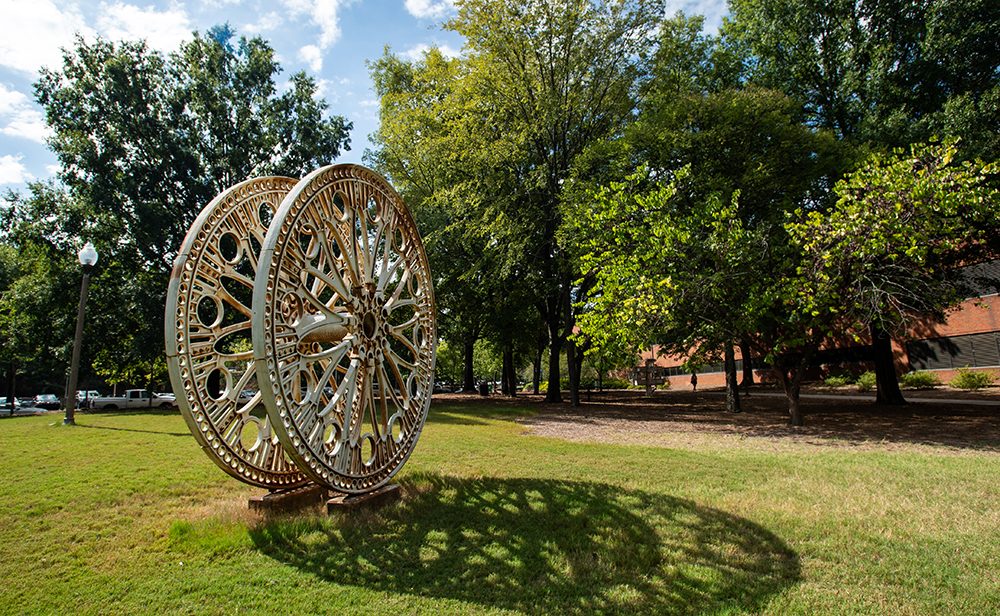
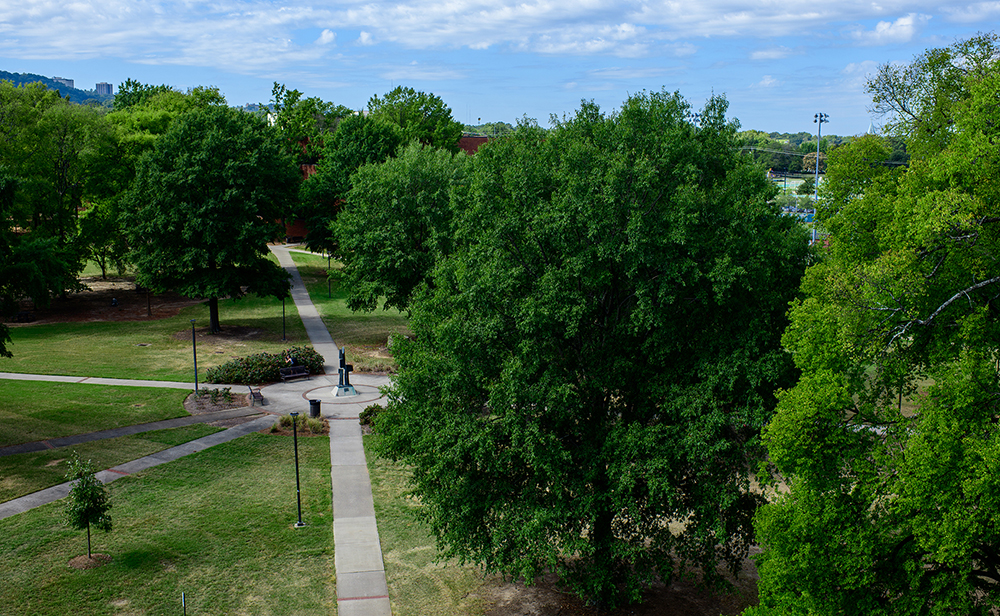
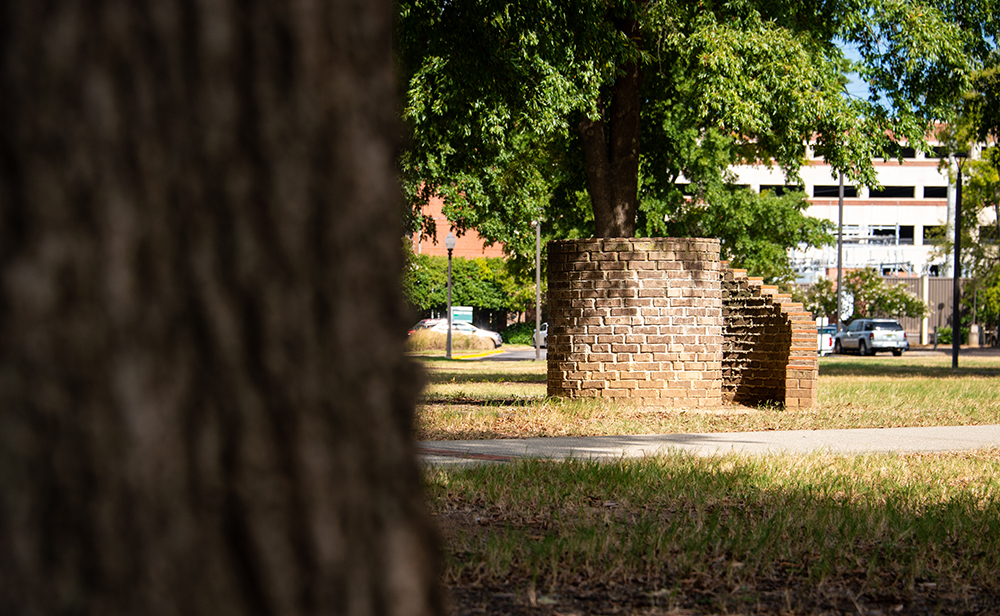
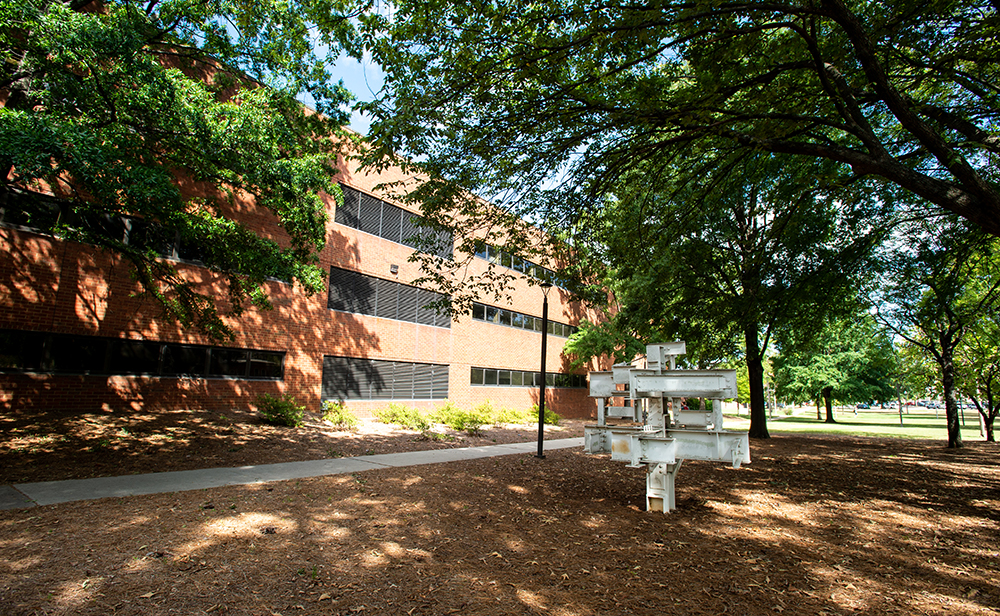

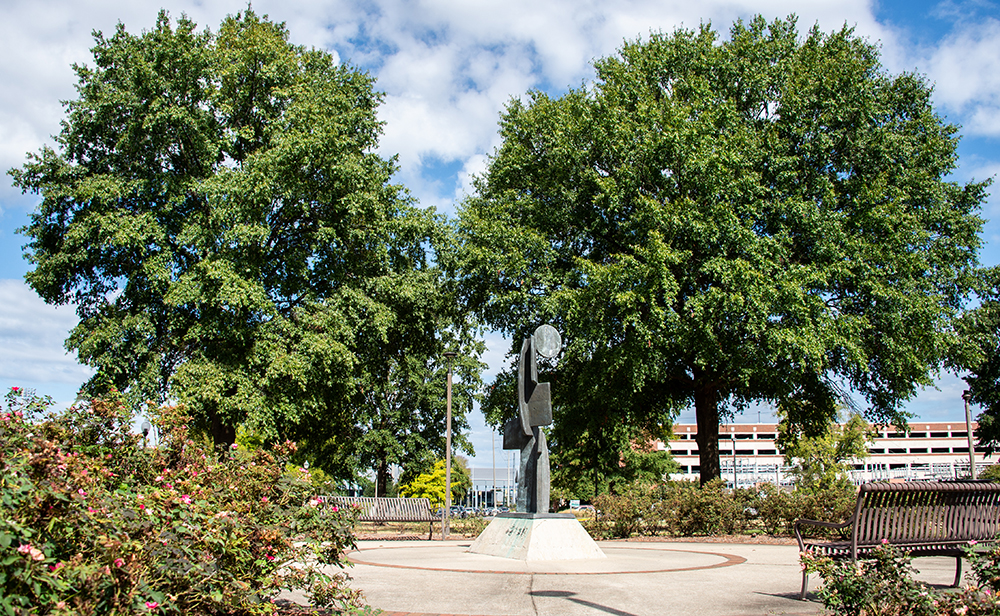
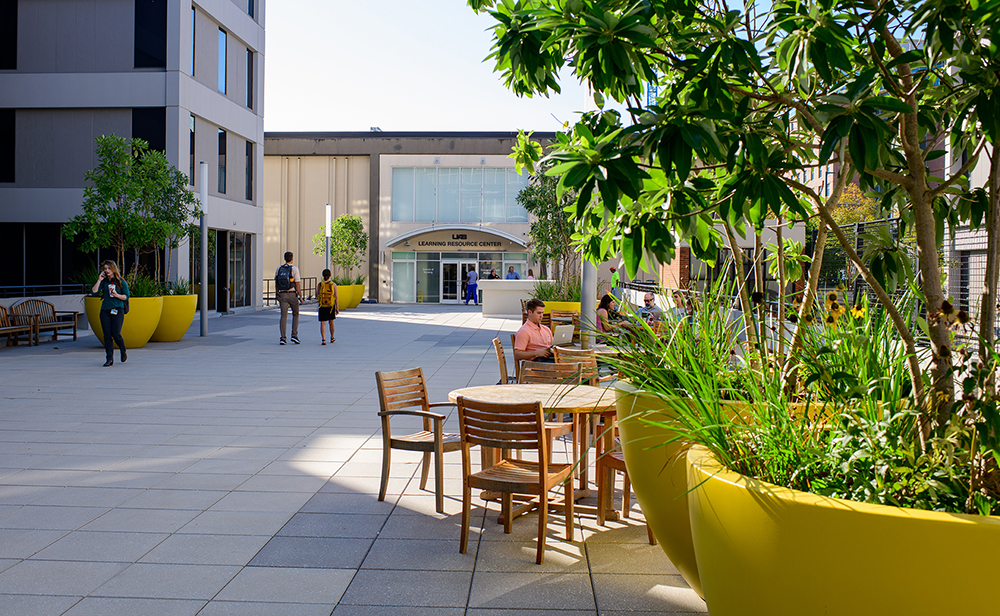

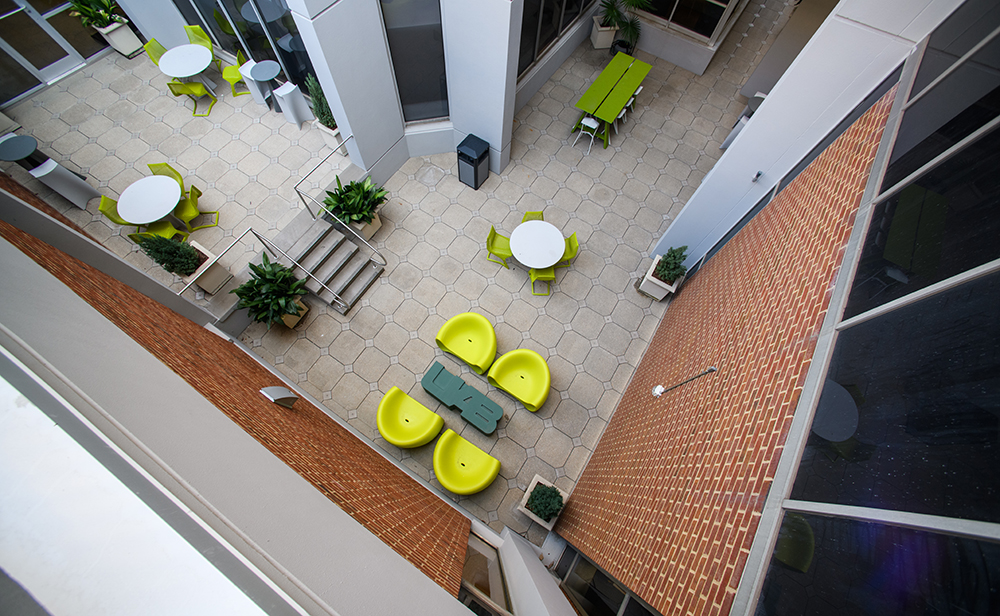




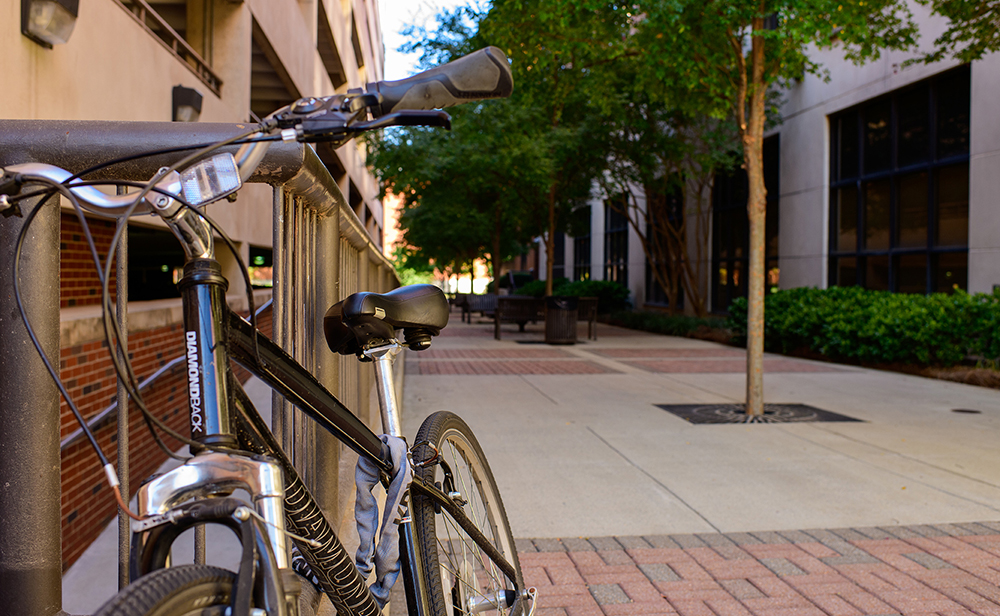
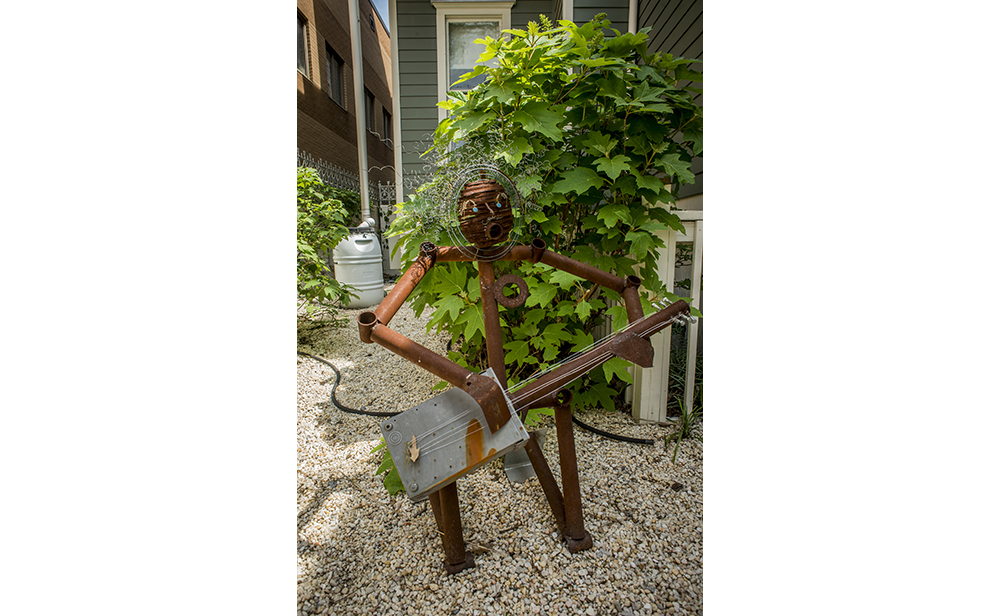
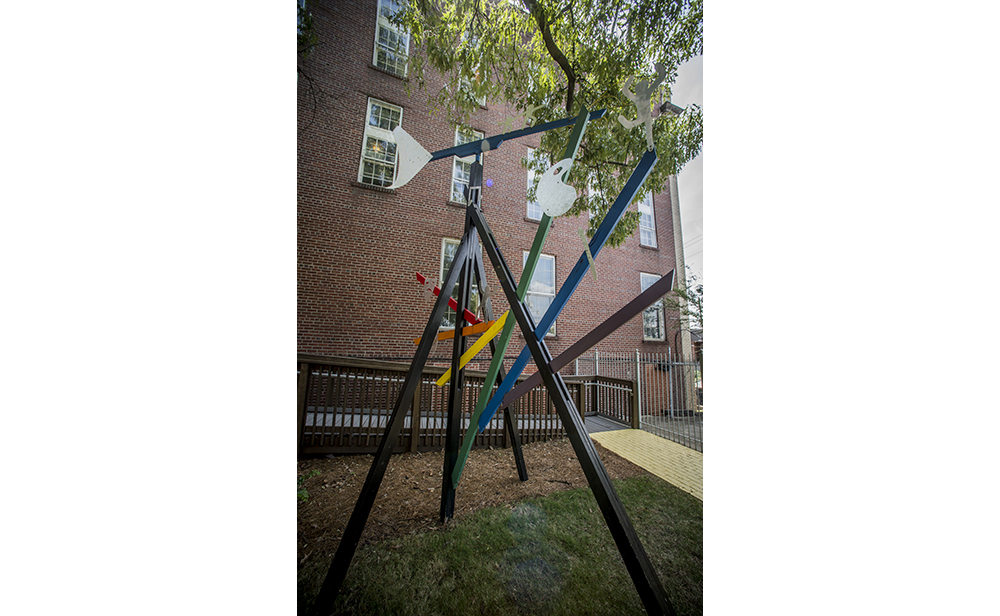
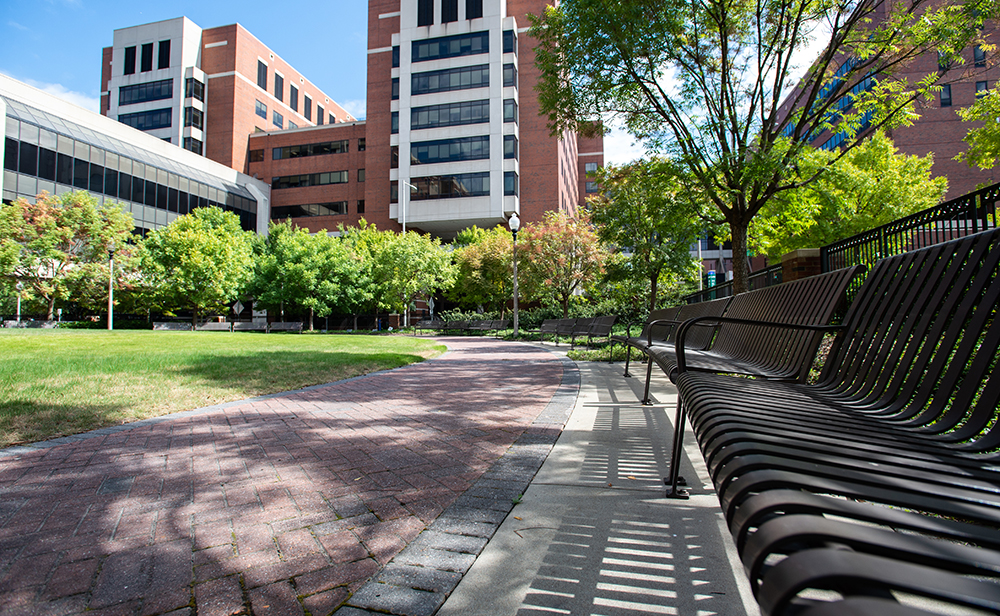

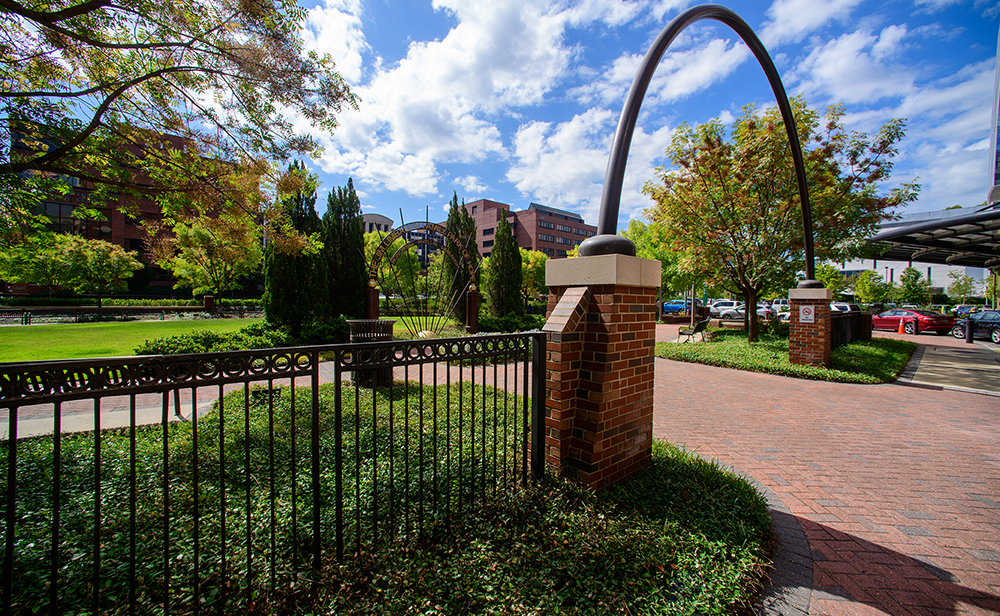

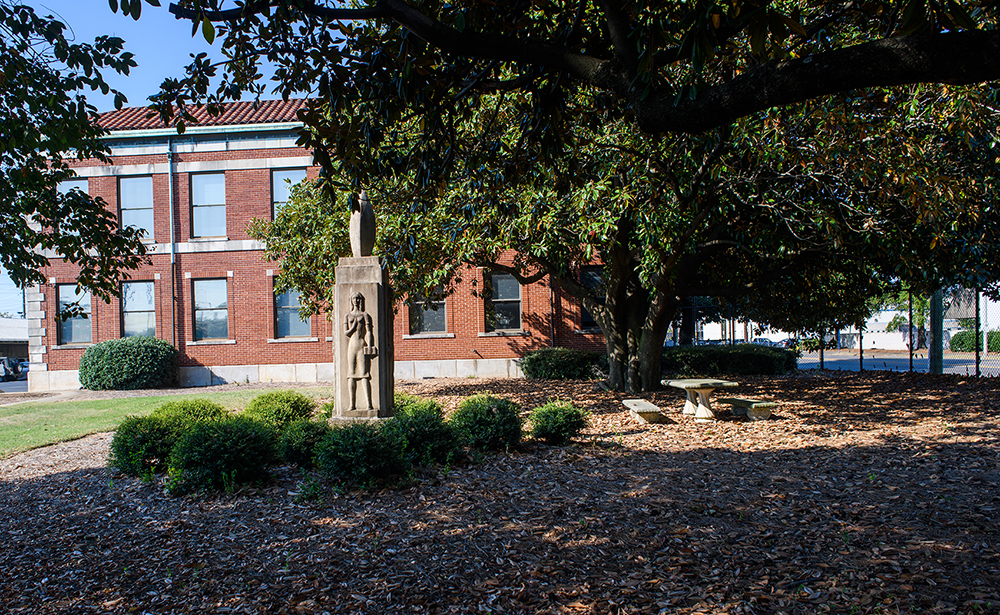
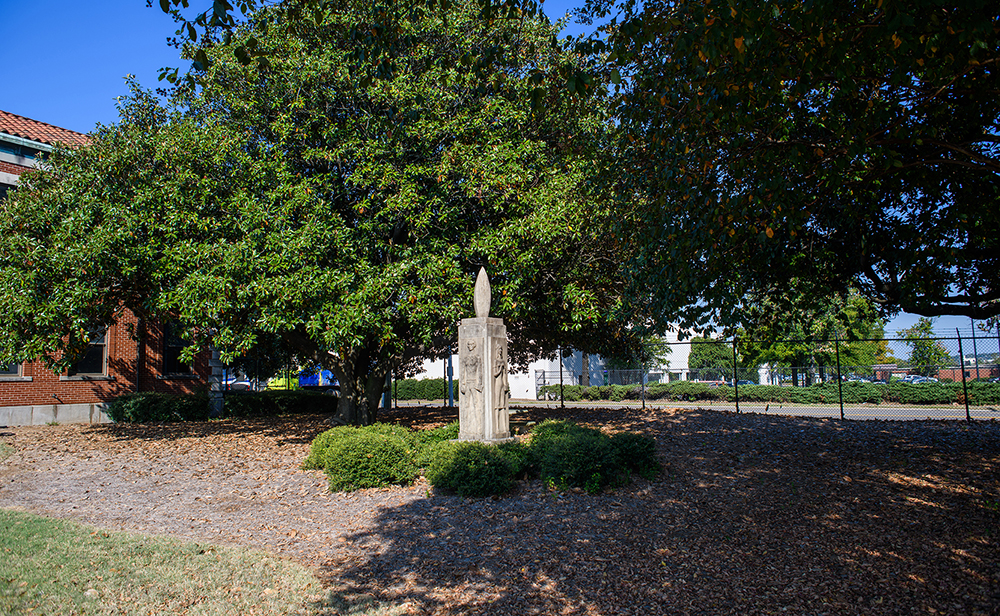
 Love our campus? Send your thanks
Love our campus? Send your thanks